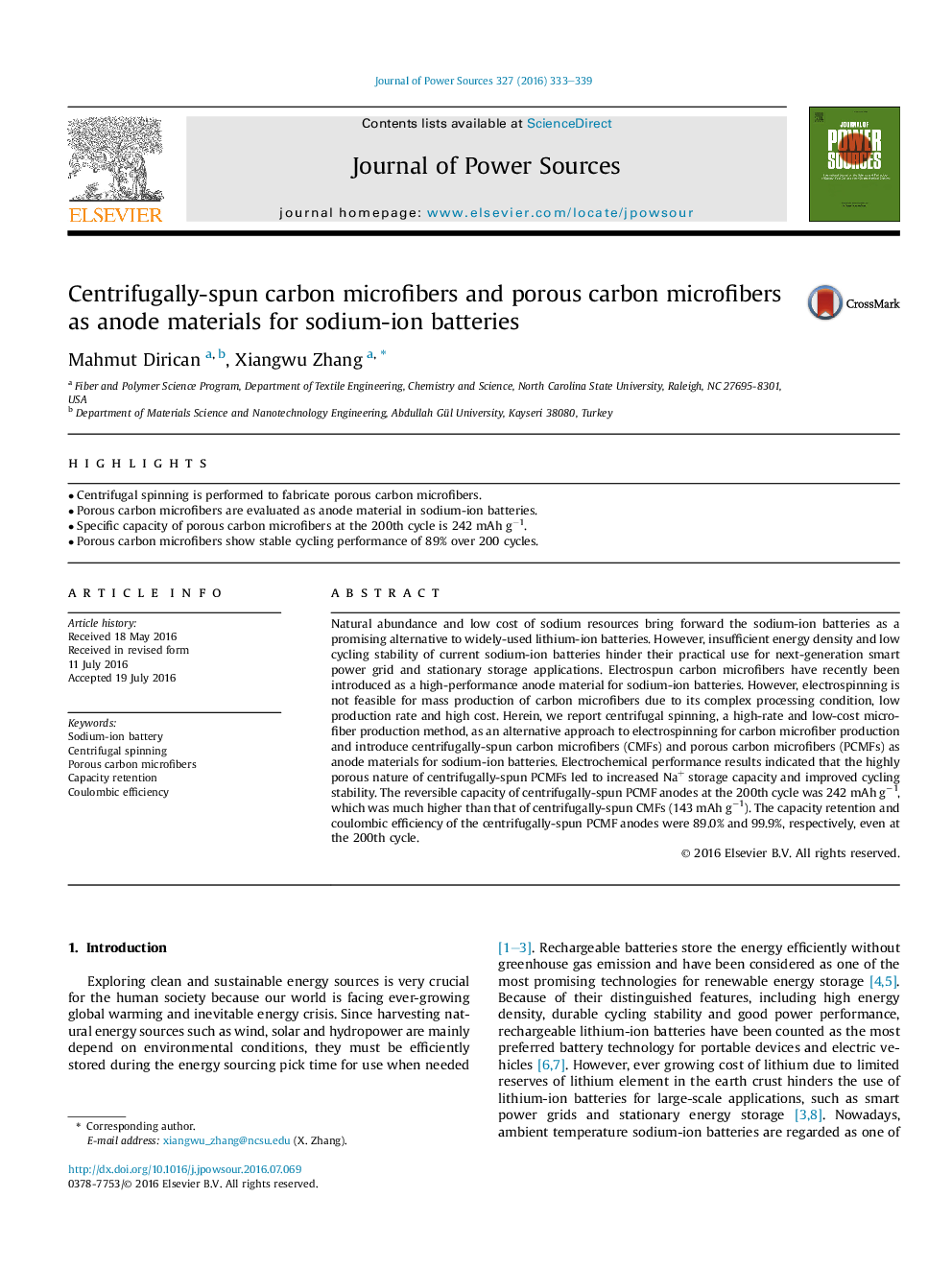| Article ID | Journal | Published Year | Pages | File Type |
|---|---|---|---|---|
| 7726985 | Journal of Power Sources | 2016 | 7 Pages |
Abstract
Natural abundance and low cost of sodium resources bring forward the sodium-ion batteries as a promising alternative to widely-used lithium-ion batteries. However, insufficient energy density and low cycling stability of current sodium-ion batteries hinder their practical use for next-generation smart power grid and stationary storage applications. Electrospun carbon microfibers have recently been introduced as a high-performance anode material for sodium-ion batteries. However, electrospinning is not feasible for mass production of carbon microfibers due to its complex processing condition, low production rate and high cost. Herein, we report centrifugal spinning, a high-rate and low-cost microfiber production method, as an alternative approach to electrospinning for carbon microfiber production and introduce centrifugally-spun carbon microfibers (CMFs) and porous carbon microfibers (PCMFs) as anode materials for sodium-ion batteries. Electrochemical performance results indicated that the highly porous nature of centrifugally-spun PCMFs led to increased Na+ storage capacity and improved cycling stability. The reversible capacity of centrifugally-spun PCMF anodes at the 200th cycle was 242 mAh gâ1, which was much higher than that of centrifugally-spun CMFs (143 mAh gâ1). The capacity retention and coulombic efficiency of the centrifugally-spun PCMF anodes were 89.0% and 99.9%, respectively, even at the 200th cycle.
Related Topics
Physical Sciences and Engineering
Chemistry
Electrochemistry
Authors
Mahmut Dirican, Xiangwu Zhang,
